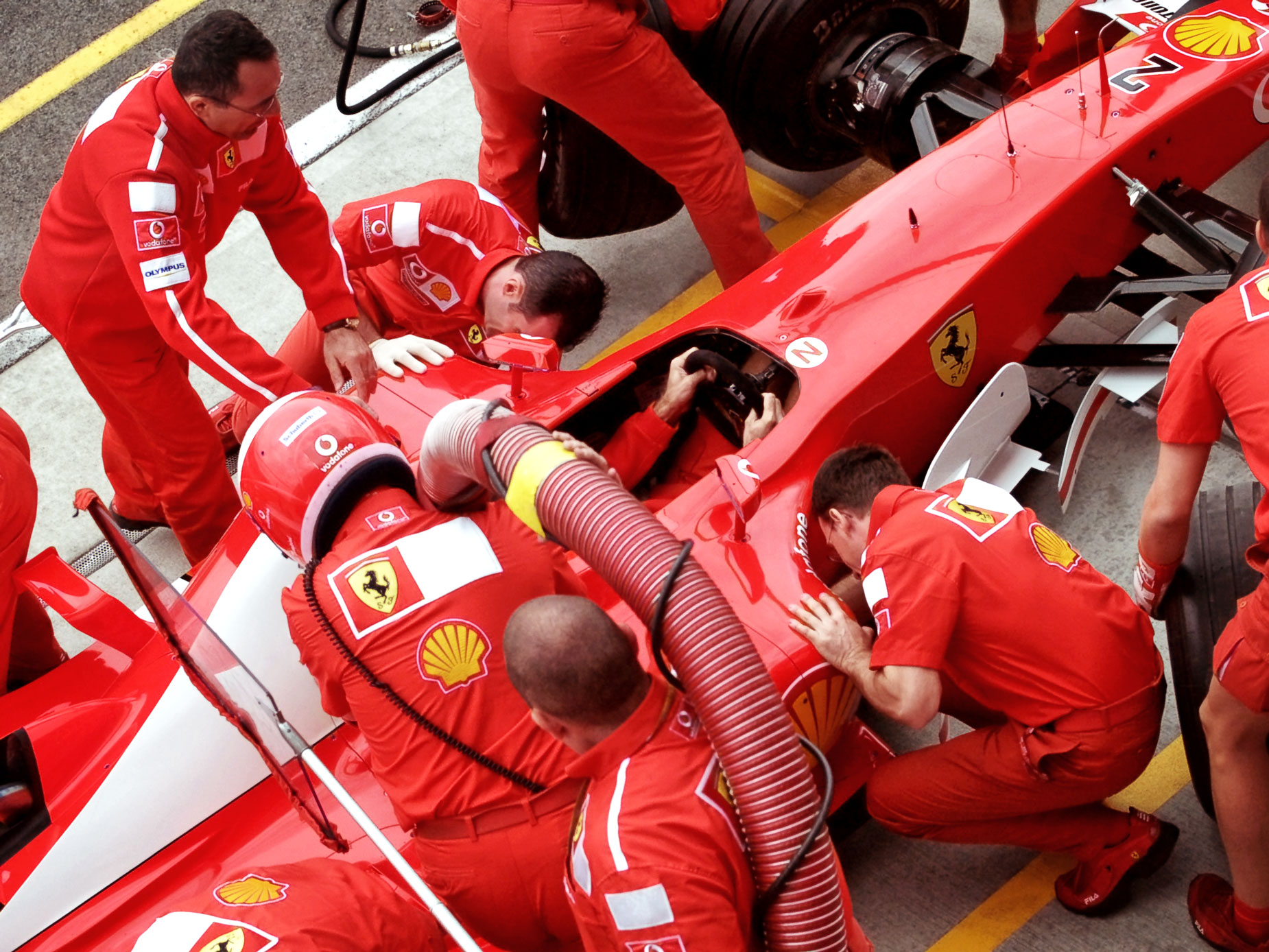Today’s Post by Joe Farace
“The way to achieve your own success is to be willing to help somebody else get it first.” – Iyanla Vanzant
It’s #wheelswednesday and I’m reminiscing about the only time, I was able to shoot photographs at that most hallowed of racing venues: The Indianapolis Motor Speedway—aka the Brickyard

How I Made this Photo: This image of a Ferrari practice pit stop was captured at the 2003 US Grand Prix at Indianapolis using an Olympus E-1 DSLR with an exposure of 1/640 sec at f/4.6 and ISO 400. At that time, I was a guest in the Ferrari suite which was located just above their pit area. The windows sloped outwards, allowing me to hold the camera over my head and shoot down into the pit area and I made several shots of their practice stops. While not everybody has an opportunity to make this kind of image, I could have just sipped their wine and schmoozed (like some of my colleagues) but instead I grabbed at the chance to make some special images.
At The Brickyard or Anywhere Elese
One of the most important things to keep in mind when photographing cars, either a classic car or a race car, is to start by choosing an interesting camera angle. To make your car photographs stand out from the rest take the time to explore unconventional views of the car. Low or high angles not only provide a different perspective but minimize background clutter. Many pros use twenty-foot stepladders but even a short, two-step kitchen step stool will get you higher than eye level. Or maybe just climb a hill and use a long zoom.
It’s a good idea to try low angles and tilt the camera to provide a dynamic image. This approach will simplify the composition by eliminating distractions that are easily seen at eye level, which is the way many people shoot cars. Some of the best shots can be made when you’re lying on the ground pointing your camera uo at odd angles up at the car. Tip: Be sure to wear your grungies.
One of the disadvantages of using low camera angles with wide-angle lenses is that sometimes the wheels will not be round because of a combination of distortion at the edges of the lens and the camera angles that are selelcted. If that’s the kind of thing that bothers you, you will need shoot with a view camera or buy/rent a pricey tilt-shift lens. Photographs of cars with wheels that aren’t perfectly round don’t bother me.

Along with photographer Barry Staver, Joe is co-author of Better Available Light Digital Photography that’s out-of-print but new copies or used copies are available from Amazon, as I write this.